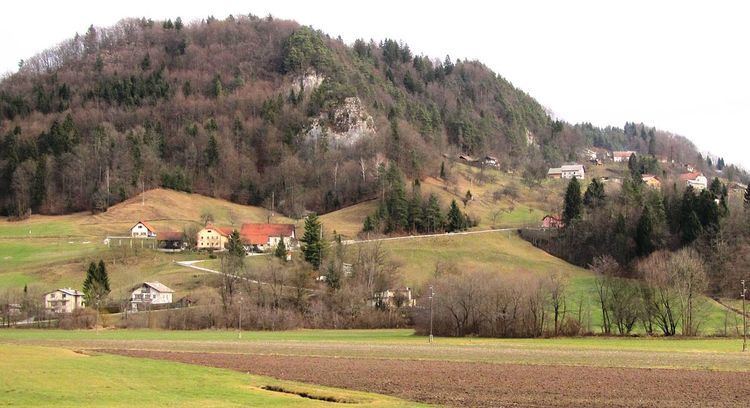Area 3.51 km² Population 153 (2002) | Elevation 440 m Local time Monday 4:24 PM | |
 | ||
Weather 12°C, Wind W at 11 km/h, 35% Humidity Municipality Municipality of Dobrova–Polhov Gradec | ||
Babna Gora ([ˈbaːbna ˈɡɔːɾa]; German: Babnagora) is a dispersed settlement, east of Polhov Gradec in the Municipality of Dobrova–Polhov Gradec in the Upper Carniola region of Slovenia. It stands below Veternik Hill (554 m; also known as Vetrnik or Tabor). It includes the hamlet of Zibel to the southwest of the main settlement.
Contents
Map of Babna Gora, Slovenia
Name
Babna Gora was first mentioned in 1315 as ouf dem Babenberch pei dem Stein (literally, 'on Mount Baben by the stone') and in 1490 as Babina Gora. It is mentioned as Wabnagora or Babnagora in Johann Weikhard von Valvasor's 1689 work The Glory of the Duchy of Carniola. In the past it was known as Babnagora in German. Oral tradition claims that the name Babna Gora (literally, 'women's mountain' or 'broad's mountain') is derived from the Babčar Fort (see below) because the local women would take refuge there and to repel Turkish attacks. However, because the fortification postdates the 1315 attestation of the village's name (the Turks attacked the area only once, in 1476), this is merely a folk explanation. In fact, lone cliffs or rock formations are often named Baba 'old woman' or Dedec 'old man' in Slovenia, and it is from this that the toponym Babna Gora and oeconym Babčar are derived.
History
Valvasor's 1689 The Glory of the Duchy of Carniola states that an "old, destroyed, mighty camp" stood at the top of Veternik Hill and that it was a "large structure, containing fourteen rooms." This fortification, the Babčar Fort (Babčarjev tabor), is named after the Babčar farm in the village and dates back to at least the 15th century. The ruins of the Babčar Fort are protected as cultural heritage.
Mass grave
The forest just outside Babna Gora is the site of a civilian mass grave from World War II known as the Martinčič Family Grave (Slovene: Grob Martinčičeve družine). The victims were nine members of the Hudnik family from the Martinčič farm (an oeconym) that were executed by the Partisans on 12 April 1942 for sheltering a deserter.
Cultural heritage
In addition to the Babčar Fort, several other structures in Babna Gora have protected cultural monument status:
